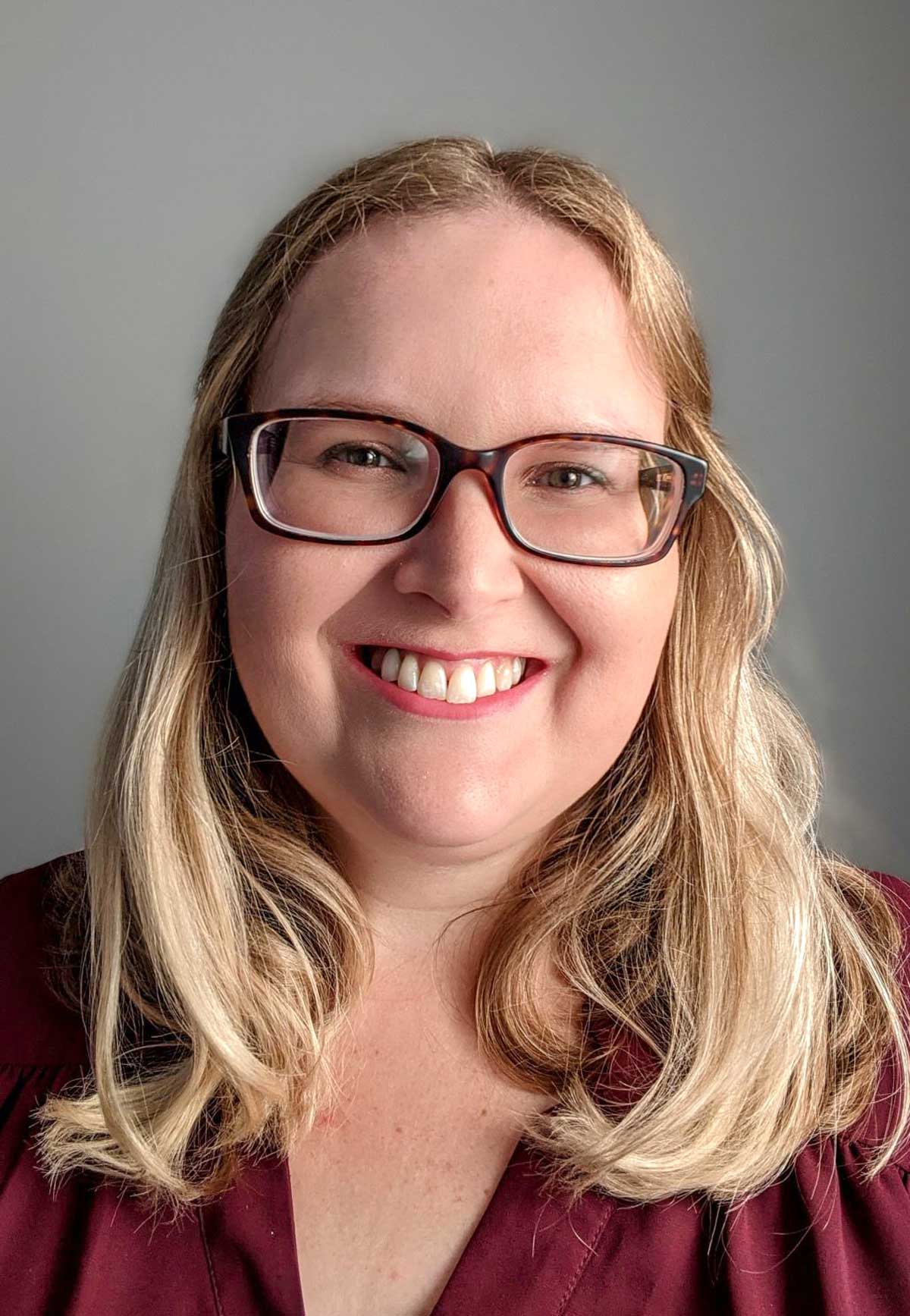PROFILE
Museum on the Move
Stacey Knepp ’07 is ensuring an important exhibit reaches a wider audience
by Katie Williard
It’s assumed that before the mid-1940s most Americans were unaware of the Nazi atrocities occurring in Europe. An exhibit by the United States Holocaust Memorial Museum set out to challenge that idea and examine what Americans knew — and when and how they responded.
Initially, seeing Americans and the Holocaust required a trip to Washington, D.C. Thanks to the efforts of Stacey Knepp ’07, the exhibit and its compelling message (which inspired the 2022 Ken Burns documentary The U.S. and the Holocaust) have a far greater reach.
From 2021 through summer 2026, the exhibit is traveling across the country, appearing at 100 university and public libraries from Bangor, Maine, to Kapolei, Hawaii.

Photo credit: Stacey Knepp ’07
In her work as a project manager, Stacey Knepp ’07 is consistently reminded of the value of her interdisciplinary Bucknell education.
Knepp joined the museum in 2013 as its first project manager and became the center point of the massive educational initiative in 2015 — three years before the exhibit came to life in the museum and seven before it hit the road.
“The museum’s work is complex,” Knepp says. “A lot of projects are mammoth, multi-year efforts. Stewarding projects first requires setting clear goals and educational outcomes, and then it’s a lot of consensus-building and decision-making to get it to the finish line.”
In her role, Knepp relies on the communication, critical-thinking and creative problem-solving skills she developed at Bucknell as a classics and comparative humanities double-major. She found a love for languages under the influence of professors Stephanie Larson, classics & ancient Mediterranean studies, and Katie Faull, Presidential Professor of German and Comparative Humanities. A study abroad opportunity allowed Knepp to learn classical Greek at University College, Oxford. “Learning a classical language really pushed me outside my comfort zone,” she says. “I started collecting languages; I learned German then Arabic. I was just so fascinated by the worlds that languages open.”
After Bucknell, she continued her study of languages at the Center for Translation Studies at the University of Texas at Dallas, which led to an opportunity as a project manager for a global software company and eventually to her role with the holocaust museum.
“Guiding strategic thinking in a museum setting requires me to take in a lot of different aspects of our work,” she says. “I draw from the fields of history, education, management, communications and financial planning on a daily basis. It forces me out of siloed thinking. The interdisciplinary perspective of Bucknell has been really essential in my work.”